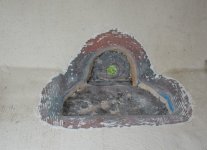Sunbeam
Active member
- Joined
- Feb 23, 2012
- Messages
- 3,990
- Reaction score
- 0
- C Dory Year
- 2002
- C Dory Model
- 22 Cruiser
journey on":28f6pfoq said:I'm kind of curious as to why holes through the hull is a bad thing.
So what's wrong with a through hull? Honest question. Assuming you use good bronze stuff.
I can give you my thoughts.
First of all, if good components are used and they are properly installed with high quality components (valves, backing blocks, connectors, hoses, clamps, etc.), I don't think there is anything wrong with a through-hull. But. There are components (even if they are the best money can buy), and no matter how good they are, they will always be more complicated and less reliable than no hole in the hull. In other words, while I am not one to avoid a through-hull at all costs, and while I think they are a fine thing if properly installed and maintained, I do also know that something that is not there to begin with can't possibly have a problem. Something that is there may be worth the risk, and the risk may be very low, but it is still a risk (I have happily put through hulls into my other boats when I wanted them; but I have also eliminated and glassed over ones I considered to be superfluous and/or changed those that were poorly installed).
To thicken the plot: Through hulls and associated hardware (hoses, clamps, backing blocks) are not always installed using "best" components, and, when installed into cored hulls the coring is often not closed out in what I would consider to be the correct way. In that case I would consider it a very undesirable liability (possible consequences ranging from wet core to de-bonding to sinking). Especially if there were another way to easily accomplish the same thing (e.g. washdown pump intake over the transom)
PS: This does not mean they are all this way, but I have seen photos of a through hull installed on a C-Dory that did not use best components, etc. I have also seen this on many, many other production boats, so it's not a knock on C-Dory especially.

